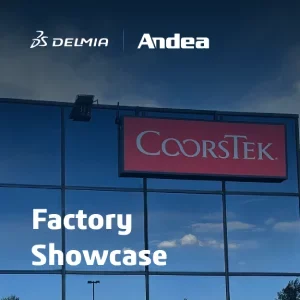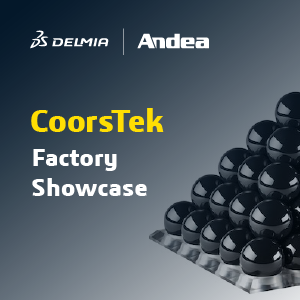

Agile MES - it's not as scary as you might think
A viable alternative to the traditional waterfall project management methodology, the agile approach quickly proved effective and became a preferred software delivery model for many development teams and stakeholders. However, the agile adoption rate in the MES space has not been stellar.
MES isn’t the easiest software to deploy in general, but at least the traditional development model provides stakeholders with a well-defined budget, timeline, and project phases – something that cannot be said about the agile approach, and probably the number one reason why manufacturers are still hesitant about it. That’s not to say agile MES is chaotic and relies on wild guesses or hunches, but the waterfall methodology has the advantage of instilling confidence and stability across the entire SDLC.
There’s just one “but”: the waterfall’s aversion to implementing changes not included in the initial plan. Aside from the fact that requirement gathering in itself can be challenging, things like technology, stakeholders, or project goals can change at any time, and your software development must keep up with those changes while ensuring robustness and stability in daily operations – and that’s where agile MES becomes a feasible solution.
Start small, think big
If going agile has crossed your mind, it’s important to view the agile methodology as a way of thinking rather than a set of rules and best practices to follow. At its core, going agile means creating a solution that moves the needle for the entire organization – and modifying it as users test it and provide valuable first-hand insights and suggestions on how to unlock the full potential of your MES.
Agile teams work in sprints (2-4 weeks), taking an incremental approach to project phases which are always pre-approved by the project’s core team – developers, QA, project managers, and key business personnel. In agile, any modifications, extending capabilities, or future changes can be developed, tested, and implemented almost immediately, unlike in waterfall, where they get progressively more expensive and usually have to wait until the development process is over or the solution is due for an upgrade.
There is, of course, a lot of work involved upfront, although not to the same extent as the traditional requirements gathering. It’s imperative that every member of the project’s core team is aware of the shared goals and vision, even if that vision is not 100% complete. The budget is also planned, except it’s a ballpark figure for the cost of the entire project with the openness to pivot during the development – unlike predicting the budget before any coding work starts, and thus, not having the flexibility to adapt to changes.
However, unless the collaboration and communication between all key stakeholders is frictionless, the techniques described above alone are not enough to deliver a successful agile MES solution. It is critical that the feedback is fed in real-time, communicated across all team members, and consulted before taking action to avoid frustration and teams working toward different goals.
Seeing is believing
CoorsTek, the global leader in technical ceramics, is one of the manufacturers who decided to put the agile MES to the test with our help. It was one of, if not the fastest moving project for its size that we have seen at Andea. CoorsTek approached us to replace their previous solution with Apriso Maintenance, expand it to include Production, Quality, Warehouse, and roll it out on CoorsTek’s other sites.
Due to the extensiveness of this project, we decided to run it in a Kanban-style to streamline planning and reduce the number of meetings. The project ran in 2-week iterations (sprints), and our MES consultants had daily meetings, “Standups”, with the CoorsTek team so that everyone involved was coming from the same direction. Additionally, prior to the rollout, we held a workshop for the project’s core team to get a good idea of what is needed and validate it in a group of key people in an effort to create a united front.
It’s also vital to mention that the entire team was quality-focused from day one, and nothing was developed without a plan to test it. We decided to bring on board our Project Excellence team, responsible for carrying out tests and spotting hidden issues to minimize the risk of disturbing the production process. As a result of this meticulous approach, we delivered over 320% of the original scope of functionalities, on time and within the budget.
What did we learn during this project?
- Agile MES has a faster rollout time as prioritization is key to agile success. By splitting the SDLC into chunks and prioritizing tasks (development queue, testing, or resolving critical issues first), agile teams focus on aspects that make the biggest impact on the solution’s performance. This, combined with fast and responsive releases that continuously improve the whole solution can substantially shorten the development time.
- Although it’s not always the case, Agile MES can reduce development costs. As we mentioned before, things change – people, market, and technology – and agile empowers you to adapt and take advantage of those changes without overspending, or going over the agreed upon schedule while still delivering a viable solution.
- Agile MES facilitates faster response times and greater flexibility. The frictionless feedback loop between all parties involved (developers, QA, key stakeholders, project managers, users) and enhanced collaboration required to make agile work results in faster and less costly changes to the product backlog.
Agile MES: One step ahead of the future
The extent of MES capabilities is almost limitless. Unfortunately, many manufacturers only scratch the surface of what’s possible, trusting the safety of the waterfall model despite its limitations. On the other hand, while the agile approach isn’t right for everyone, it almost immediately starts delivering value and continuously builds upon it as real people test the solution. While both methods can successfully deliver MES software, one thing is clear: the waterfall model is becoming increasingly difficult to justify in fast-paced manufacturing environments where speed and quality go hand-in-hand.
To find out more about the CoorsTek project, click below to read the full case study or contact us to see how we can help your business go agile.
You also might like

Pioneering the Path Forward: Unpacking the CoorsTek Factory Showcase
Pioneering the Path Forward: Unpacking the CoorsTek Factory Showcase The recently culminated CoorsTek Factory Showcase, in collaboration with Dassault Systèmes and hosted at CoorsTek Factory,

CoorsTek Factory Showcase: A Tale of Transformation in Collaboration with Andea and 3DS
CoorsTek Factory Showcase: A Tale of Transformation in Collaboration with Andea and 3DS We’re thrilled to invite you to one of the most anticipated events

Improve your laboratory efficiency and streamlining planning processes
Improve your laboratory efficiency and streamlining planning processes Digital transformation in life science happens continuously, quickly, and in front of our eyes. Changes are driven

Intelligent planning and scheduling for life science manufacturing excellence
Intelligent planning and scheduling for life science manufacturing excellence In today’s world, life science transformation is increasingly more important for environment and has a significant

